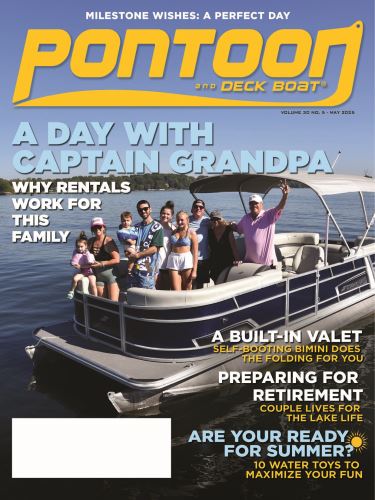Marine engines are excluded from the Environmental Protection Agency's decision to allow the sale of fuel that is more than 10 percent ethanol, but the approval could still have a wide negative impact on boating, according to marine engine builders and industry experts.
The waiver applies to fuel that contains as much as 15 percent ethanol, known as E15, which can now be used in cars from model-year 2007 or later. The EPA says it has done vigorous testing to ensure that E15 is safe for these cars and is conducting additional tests on cars built between 2001 and 2006.
The waiver is not a mandate to force the use of E15, Gina McCarthy, EPA assistant administrator for air and radiation, said in a call Wednesday with reporters.
Mercury Marine, the top marine engine builder, stressed its opposition to the decision, saying, "It is inevitable that higher ethanol blends will mistakenly find their way into other unintended applications.
"We join other industry groups in the belief that the level of testing performed to support the EPA decision was inadequate and that the processes designed to prevent the unintended use of this fuel blend in non-highway applications or older vehicles are inadequate," Mercury said in a statement to Soundings Trade Only.
"Fuel containing higher proportions of ethanol is not compatible with many fuel system and engine components and, if mistakenly used, will cause irreversible damage to these components that will lead to engine failure and potential safety risks," the company added.
The EPA is proposing E15 pump-labeling requirements, including a requirement that the fuel industry specify the ethanol content of gasoline sold to retailers. This, the agency said, will help consumers choose the type of gasoline they need for their engines.
The National Marine Manufacturers Association, which has lobbied hard against E15, said this step does not go far enough.
"We think it will create a great deal of consumer confusion at the pump when boaters fill up their boats and their cars and trucks. Ninety percent of recreational boats registered in the U.S. today are under 26 feet in length, which means generally that they're trailered boats and the overwhelming majority of boaters fill up at regular automotive gas stations," Mat Dunn, legislative director for the NMMA, told Soundings Trade Only.
"There is a very high risk of misfueling and we don't think that EPA is currently pursuing robust or meaningful control to prevent misfueling and eliminating consumer confusion on this issue," he added.
Dunn noted that when the United States made the transition from leaded to unleaded gasoline, the size of the gasoline nozzle was changed to prevent misfueling, but that strategy didn't work.
"Even with that physical barrier, rates of misfueling were very high and persisted for about 15 years after that transition and so we know that a label is not sufficient enough," he said.
The Marine Retailers Association of America, which also fought against E15, agreed that the decision will only lead to confusion among consumers.
"With this new ruling, the EPA sounds a lot like what the government did with the colored diesel fuel mess we had 20 years ago. A fuel dock will have to have 'Dial an Ethanol' button on fuel tanks to comply with engines built before 2000 and engines built after 2007," MRAA chairman Ed Lofgren said. "I guess the in- between engines will just have to wait at the fuel dock until the government figures it all out."
Also, Dunn noted, although E15 is not mandated, the EPA did not announce any actions to ensure that, over time, compatible fuels will remain available to the consumers and owners of products for which E15 is not approved.
"It is still unclear to us if appropriate fuels will be available to recreational boaters and if marinas will have to stock E15 fuel for engines made after 2007 and E10 fuel for engines made before 2001," MRAA president Phil Keeter said.
Additionally, states can now create their own regulations involving E15.
"Certainly in the Midwestern states, in particular, we think the transition to E15 is going to be very rapid," Dunn said. "The state of Minnesota, for example, already has set the table for very rapid introduction of E15 into the markets there."
The EPA's decision is based on a petition submitted to it in March 2009 by Growth Energy and 54 ethanol manufacturers. The petition was submitted under a Clean Air Act provision that allows the EPA to waive the act's prohibition against the sale of a significantly altered fuel if the petitioner shows that the new fuel will not cause or contribute to the failure of the engine parts that ensure compliance with the act's emissions limits.
- Beth Rosenberg
b.rosenberg@tradeonlytoday.com

